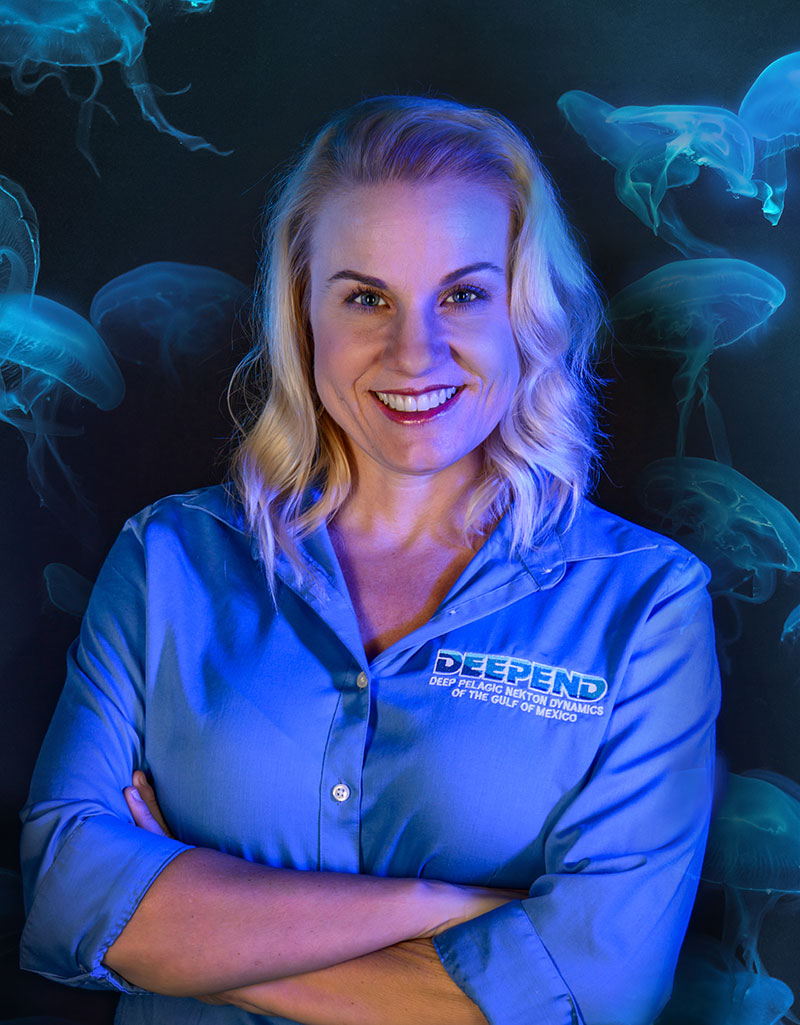Apparently, the ability to glow doesn't make you special — if you're a shrimp in the deep sea.
Scientists have discovered bioluminescence is actually pretty common among deep-sea shrimp, with a new study identifying 157 species that are believed to possess the ability to emit light. Some do it by vomiting luminous secretions and others through specialized light organs in their bodies. Some even do both. The reasons why they do it are just as diverse as how they do it, according to study authors Stormie Collins, a Ph.D. student at FIU, and Associate Professor Heather Bracken-Grissom. They say some shrimp may use bioluminescence for camouflage, others for defense and others to communicate with fellow shrimp.
"We are learning that bioluminescence is much more common than previously thought, not only within shrimps, but across all deep-sea animals," Collins said. "We hope this study can advance the field of sensory biology and foster an appreciation for the intricate beauty of deep-sea shrimp beyond just a snack during happy hour."
This latest study, published this week in Biological Reviews, increases the total number of suspected glowers by 65 percent, with a previous review only identifying 55 species of bioluminescent shrimp. The scientists relied on a variety of tools to add to the growing number of glowing species.
"Some of these were ones we personally observed while on deep-sea missions. We also relied on literature and observations of others to get to this number, but it's very likely there are more species to still be identified as bioluminescent," said Bracken-Grissom, who also serves as assistant director of the Coastlines and Ocean Division of FIU's Institute of Environment.
Prior to this study, shrimp using luminous secretions were thought to be the most common type of bioluminescence but with the updated total, more species appear to rely on the light organs embedded in their tissue called photophores.
The full extent of bioluminescence in the animal kingdom remains a mystery with deep-sea animals being the most elusive and difficult to study. Through past studies, Bracken-Grissom has also shown that there is a great variety in light organs on shrimp including where in the body they are found. She and her team continue to explore new, innovative ways to investigate and improve understanding of bioluminescence — one of nature's most aesthetic and mysterious phenomena.
"Bioluminescence is the universal language of light in the deep sea," Bracken-Grissom said. "It is imperative we continue to study this behavior to better understand how animals survive in the dark. Because so little is known about the various structures and functions, we are finding new and exciting discoveries with each expedition at sea. We love shrimp and everyone else should too."

Heather Bracken-Grissom is a marine evolutionary biologist and associate director of FIU's Coastlines and Oceans Division in FIU's Institute of Environment. She is the first to identify an unknown species of monster larva as a shrimp and was part of an international team that captured the first-ever video of a giant squid in U.S. waters. She is the North American governor for the international academic organization Crustacean Society. In recent years, she has been honored with two new species of crustaceans being named after her — a hermit crab and a vomiting bioluminescent shrimp.






